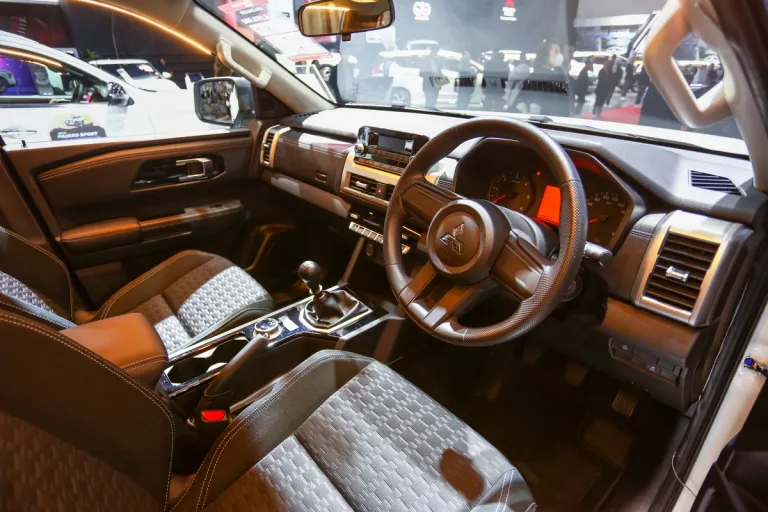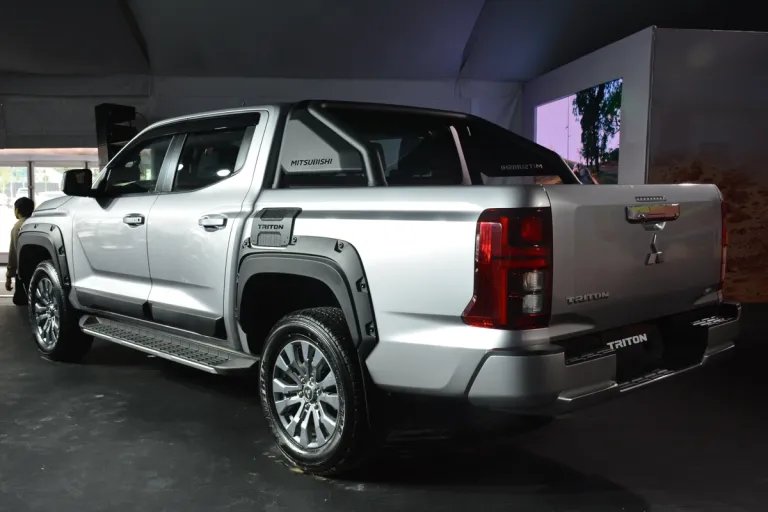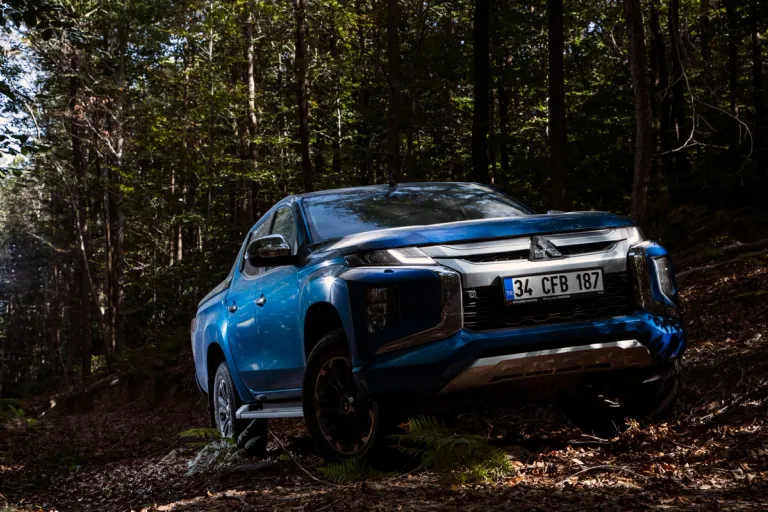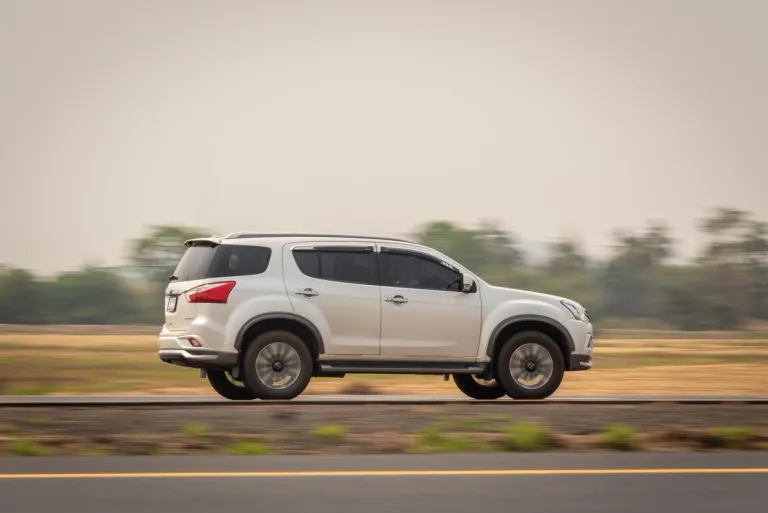In Australia’s ute market, the Mitsubishi Triton has done just what a ute should do: stick around for a long time. That said, it’s also been a good time. The Triton was, for a while, one of the most affordable utes for Aussies. The introduction of the GWM Ute Cannon and the LDV T60 onto the scene has shaken things up when it comes to the price tiers, but Mitsubishi’s latest models have also had a general spike. With this, you get what you would expect at the new price point: upgrades in the technology and mechanical departments, like the addition of a dampened tailgate, as well as some much-needed functionality, including a wider wheelbase, meaning the back seats can fit three adults if desired.
This is all well and good, but how are you meant to know if any of this is relevant if you don’t take it somewhere where the road is a little less solid? We got our hands on our very own Triton and put it to the test in environments where power and torque become more than just numbers on a specs sheet.
Overview of the Mitsubishi Triton
If you’re familiar with Mitsubishi’s latest ad run for their fearless ute, you’ll know it’s ‘Coight-proof’. Now, we think that tag can only be awarded to a truly bulletproof, truly reliable ute. One that won’t buckle at the sight of a 3-tonne caravan, shy away from muddy kids in the back or spit the dummy when tackling corrugations. Knowing this, what are the initial numbers that make this beast tick?

closeup of mitsubishi triton grill
With a 2.4L diesel twin turbo engine chugging away under the hood, there’s enough reliable power to set some decent expectations. 150kW of power to be exact, paired with a torque of 470Nm. The promised 7.7L/100km is achievable on the highway, so tourers will find some joy by visiting the bowser less frequently. We averaged around 9.0L/100km, but considering the low-range 4WDing and towing we put this thing through, that number still impresses.
When towing, there was a noticeable strain on the rear suspension, and this could also be felt when cornering rougher roads. With some aftermarket support, this ute is more than capable of towing big loads, but stock? It needs some assistance.
Performance and Key Features
Engine Options
All the latest Triton models use the Diamond brand’s 2.4L twin-turbo diesel engine. These models offer increased power and torque over the previous years and sits neatly in the middle of the ute market when it comes to this. With Mitsubishi’s 10-year warranty, however, it’ll likely outlast most other utes — you don’t tack on a warranty twice as long as your rivals if you don’t trust your product.
With either a 6-speed automatic or manual transmission, the Triton has a model to suit every type of driver, though the manual options are a little more limited, only featuring the GLX variants. The transmissions are manufactured by the reliable Aisin Group who also develop transmissions for Toyota’s Hiluxes and Isuzu’s D-Maxes.
Handling and Off-Road Capability
When you leave the bitumen behind, the new Mitsubishi Triton really starts to show what it’s made of. The Super Select 4WD-II system makes switching between two- and four-wheel drive a seamless experience — even at speed — so you can adapt on the fly as road conditions change.
The Triton’s off-road modes (gravel, mud/snow, sand, and rock) and locking rear differential combine with 222mm of ground clearance to create a capable, confident performer in tricky terrain. The 30° approach and 22° departure angles aren’t class-leading, but they’re respectable and well-suited to touring and moderate off-roading.
On corrugated roads and uneven tracks, the suspension does a good job of soaking up the rough stuff, though it can feel a little soft when towing or carrying a heavy load. Still, Mitsubishi’s updates to chassis rigidity and ride comfort mean the Triton handles better than its predecessors, especially when compared to older dual-cabs that were built more for work than play.
Whether tackling a wet logging road, a coastal trail, or a graded outback track, the Triton maintains its composure which is exactly where its appeal lies for everyday adventurers.

panoramic shot of a 4x4 travelling along a mountain trail, kicking up dust
Interior and Comfort
Inside, the Triton’s cabin strikes a smart balance between practicality and modern comfort. While still rugged enough to handle muddy boots and weekend camping gear, the materials and layout now feel more refined. The wider wheelbase means more legroom for passengers, and rear air vents — a small detail often overlooked — make a noticeable difference on long family drives.
Higher-spec variants feature leather-appointed seats, a 9-inch infotainment screen with wireless Apple CarPlay and Android Auto, and a 360-degree camera system for maneuvering tight spaces. The interface is intuitive and responsive, and with multiple USB-C ports throughout the cabin, it’s clear Mitsubishi has considered both adventurers and families alike.
Noise insulation has also improved. Road and engine noise are well contained, which means that on the highway — or when towing — the Triton remains calm and comfortable for hours at a time.

interior of a mitsubishi trito with dark furnishings
Towing Capacity and Real-World Use
For many owners, towing is the real test of a ute’s capability, and the Triton delivers solidly here. The towing capacity of the Mitsubishi Triton is 3,500kg braked, which puts it in line with most competitors in its class.
In testing, the Triton handled mid-weight caravans and camper trailers confidently, especially with its 470Nm of torque available low in the rev range. However, as noted earlier, there is a bit of rear suspension sag under heavy loads, which is something able to be addressed with aftermarket suspension upgrades for those planning to tow frequently.
What stands out most is the engine’s reliability and consistency under strain. Even with a camper hooked up, the 2.4L twin-turbo diesel keeps its cool. The transmission feels well matched, providing smooth shifts whether cruising or climbing steep tracks.
For touring families and adventure seekers alike, the Triton feels ready to take on big road trips — from the coastlines to the country’s rugged heart.
Reliability and Common Issues
When it comes to reliability, the Mitsubishi Triton has built a reputation as one of the most dependable utes on the market. With Mitsubishi’s 10-year warranty (subject to conditions), there’s a strong case for its longevity.
That said, no vehicle is without its quirks. Some owners have reported minor issues such as DPF (diesel particulate filter) warnings under certain driving conditions, or slightly soft factory suspension when heavily loaded. These are relatively common among modern diesel utes and are well documented by owners’ communities.
Routine servicing and occasional long runs to clear the DPF are generally all that’s required to keep the Triton running smoothly. Overall, it remains one of the most reliable utes in its category, trusted by tradies, tourers, and off-roaders alike.
Comparing the Triton Line-Up
The Mitsubishi Triton is available in several configurations — Single Cab, Club Cab, and Double Cab — each designed for a slightly different lifestyle.
Single Cab: Ideal for workhorse duties. Simple, durable, and spacious in the tray department.
Club Cab: Offers a balance of tray space and cabin room, great for those who need versatility.
Double Cab: The go-to for families and adventurers who value comfort and passenger space.
At the top of the range sits the Triton GSR, featuring advanced safety tech, premium interior finishes, and full-time 4WD capability. For those planning serious off-road touring, this variant offers the most complete package, though even the GLX and GLS models provide solid value and capability straight off the lot.
Ultimately, the “best model” depends on your purpose: tradies will love the practicality of the Single Cab, families will appreciate the Double Cab’s comfort and safety, and adventurers will likely gravitate toward the GSR for its off-road and towing credentials.

a mitsubishi trition in a showroom
Practical FAQs About the Mitsubishi Triton
What is the towing capacity of a Mitsubishi Triton?
The Triton’s maximum braked towing capacity is 3,500kg, depending on the model and load configuration.
What wheels fit a Mitsubishi Triton?
Most Triton models accommodate 17-inch or 18-inch wheels, depending on the trim. For off-road use, aftermarket alloys or steelies with all-terrain tyres are a popular choice — just ensure correct load ratings and offsets for your setup.
What are the common problems with the Mitsubishi Triton?
Minor DPF issues, softer rear suspension under load, and limited aftermarket tuning potential on newer models are the most reported concerns. None are deal-breakers, and the overall reliability record remains strong.
Is the Mitsubishi Triton reliable?
Yes. Mitsubishi’s long warranty and proven 2.4L twin-turbo diesel engine give it a strong reputation for reliability across Australia’s diverse driving conditions.
How long is a Mitsubishi Triton?
Depending on the variant, the Triton measures between 5.3 and 5.4 metres in overall length.
Final Thoughts
The Mitsubishi Triton has quietly evolved into one of Australia’s most well-rounded utes. It may not boast the flashiest badge or the biggest power figures, but it combines practicality, comfort, and off-road readiness in a way that fits real-world adventure.
With solid towing ability, genuine reliability, and modern features, it’s a ute that serves both families and off-road enthusiasts equally well.
Club 4X4 Insurance
Cover anywhere you can legally go in Australia





